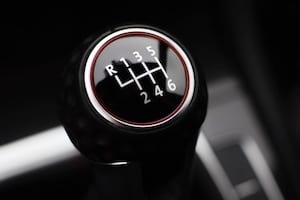Parallel parking is like a game of operation. You have to fit the car into the parking space without bumping the surrounding areas of the parking spaces which is the other cars. If you do, the horns go off! Parking can be nerve racking and difficult but it can also be a fun challenge! As you think of it that way you will enjoy parallel parking more.
The inspiration to create this parking guide and to write this article came from a parallel parking story that happened to me recently.
About a year ago I was riding passenger in my friends car and we pulled up to our destination where we had to park in a residential area jamb packed full of cars. We drove by what seemed like half a parking space and I jokingly told my friend “Bet you cant park there.” He said “Oh yeah?” and proceeded to park in the space. No way was he going to fit in the space! But he actually pulled it off. He must have driven forward and back again 25 times to get into the space but he did it and did so without bumping into anything! When we got out to look at the parking job, he had no more than 3 inches of room in the front and back of his car.
To this day it is the most impressive parallel parking job I have ever seen.
Since then I decided to create my own set of simple steps that are easy to remember that will help you to parallel park in a tight parking space.
Parallel park in a tight parking space by following these steps: 1. Decide your car will fit 2. Pull up very close to the car in front of the space. 3. Crank the wheel. 4. Commit to the curb 5. Know your limit.
With these 5 steps that are easy to remember you will become an expert at parallel parking in tight spaces. Read on to learn the details of each step.

5 Steps to Parallel Park in a Tight Space
It seems many people including every single person in Europe have the same super power that my friend had that day to be able to parked a car in an extremely small parking space. If you weren’t fortunate enough to grow up in an area where you can parallel park halfway on the sidewalk, not to worry, you can still learn how here in my set of simple steps to parallel park and get out of a tight parking space.
The five steps to parallel parking in a tight space are: 1. Decide your car will fit 2. Pull up close to the car in front of the space. 3. Crank the wheel. 4. Commit to the curb 5. Know your limit.
Keep reading and I will explain these steps in detail. These are the top parallel parking tips to fit in the smallest spaces!
These 5 simple steps make it possible to parallel park in a tiny parking space with only inches of extra room.
Now, to get to where you are confident parking anywhere, you will need to simply practice following these five steps.
These steps provide the know-how that you need to be an expert parker, but these same principles apply for a beginner.
Step 1: Decide Your Car Will Fit in the Parking Space
So many times you’ve seen a parking spot and passed it up only to drive around for an extra 10 minutes because you said to yourself, “Oh my car probably won’t fit there.” But, in reality it probably would have!
Here’s how to gauge if your car will fit in a parking spot without getting out a tape measure and measuring your car and the open space:
Go for it!
Using the following steps to position your car properly will ensure that if your car fits, you will know it. In fact, only 3 inches in front and back of your car are required to be able to maneuver your car up to the curb! You can get a general idea about if your car will fit by stopping alongside the parking space to compare the length of your car to the length of the parking space. If it looks close then go for it! But remember your car is shorter than you perceive it from the driver’s seat.
Park alongside the parking space and get out of your car (on a quiet street only of course) and inspect the size of your car compared to the space. This will make you better at judging the size of parking spaces compared to your car because it will give you a reference of what size spaces are large enough for parking.
When in doubt, remember James Bond would never back down from a tough parking space.
Step 2: Pull Up Close to the Car in Front of the Parking Space
Get as close to the car in front of you. I don’t mean close to the back of it, I mean before you back into the spot you want to take, pull up along-side the car in front of your parking space as close as you can get to their car. This positions your rear tires in the best position possible which is the real secret. If you get your rear tires in the right place, you will set yourself up to park it right, and if you don’t, you’ll look like a noob.
So, why do you need to get as close to the car in front of you as possible?
The reason for this is that when you drive back till your rear tires are at the curb and crank the wheel to position your front tires, if you did not start close enough to the car in front of you, then once your car is backed up as far as it will go before touching the car behind your space, your back tires will not be close enough to the curb. Pulling up alongside the car in front of you will end up with you parking right next to the curb.
Step 3: Crank the Wheel as You Parallel Park
As you back up your car, begin to turn the back of your car towards the parking space as soon as your back tires are in line with the back of the car in front of your space. Aim the center of your car towards the front right tire of the car behind your space.
Then, once your front tires are in line with the rear tires of the car in front of you, crank the wheel. All the way to the left. Here, you must keep an eye on the front of your car to not bump the parked car in front of you.
The closer you can get your bumper to theirs, the tighter of space you will be able to park in.
Crank the wheel applies to any other movements you need to make with your car in a tight space. Crank the wheel as far as it can go, inch forward, crank the wheel the other way, inch back, and repeat. Crank the wheel!
Step 4: Commit to the Curb by Backing all the way in to it
The smaller the parking space, the more you will have to angle your car towards the curb and when you do, and just as the front of your car clears the rear bumper of the car in front of you, your tire may roll into the curb. Take it slow so you don’t scrape your rims but this is just fine.
If you bump into the curb with your back tire, that’s okay and that’s actually what we are going for when parking in a tight space. Ideally you want to bump into the curb with the front of your car mostly behind the car in front of you and at least a few inches of space. In the instance of a larger space, you can afford not to turn your car so tightly into the curb. You can make the turns more gradually and can be further till you bump the curb. For a tighter space, you should touch the curb with only a few inches in front of your car.
Step 5: Know your Limits when Parallel Parking
At this stage you inch your way forward and back to get your car into the parking space. For very tight parking spaces you are going to need to maneuver your car several times making a sort of S curve turning your wheel into the curb to the right as you move forward then the left just before you back up and repeat.
Don’t be nervous to end up in this position. It is perfectly normal and necessary when parking in a narrow environment. As long as you have positioned your rear tires properly, you will be able to move your front tires over once you have made it this far. If there are only a few inches of extra space in the parking spot, this is when it is critical to know your limits.
The best way to learn the limits of your car:
The first time, or couple of times that you parallel park, especially if you are parking a car that is new to you, you should have a friend help guide you by signaling with their hands how much room you have in front and back of your car as you move forward and back so that you can learn the limits of your car.
After 4 or 5 times parking with a friend guiding you, you should be able to recognize how much space you have around your car from the point of view of the drivers seat.
This is also when a back up camera comes in handy. If you’ve got one, great. If not, head over to my Recommended Car Stuff page and one of my favorite “good buys” that I have made is an Apple Car play screen with backup camera.
Adding a backup camera is really the best way to know your car’s limits because you can watch the limit directly on camera!
With a backup camera installed, you will be able to park in smaller spaces without worrying about bumping the cars near you.
How do you Get Out of a Tight Parallel Parking Space?
You may have been boxed in by a car that parked extra close to you while you were away from the car, or you may be moving a car that someone else parked. Whatever the case, your car is in a tight space and you need to get out of it.
Have a friend guide you verbally and with hand signals as you inch back and forth out of a tight parking space. This way you are far less likely to bump the cars behind or in front of you. Also, move the car very slowly. Take your time and avoid using the gas pedal. Lastly be sure to crank the wheel all the way in both directions.
It is either follow these tips I have created for you, or…
If everyone were to just leave the parking brake off and their car in neutral then whenever you need more room simply nudge the cars in front of you gently out of the way to create a bit more space.
Do not to use the gas where you can avoid it. In gear the car will roll and all you have to do is gently adjust the pressure on the brake pedal.
Have a friend guide you by indicating with hand signals how much room you have.
For a friend to help parallel park with hand signals they should hold up their hands palms open facing each other representing the amount of space that you have between your car and the cars surrounding the parking space.
What is the Minimum Amount of Space Required to Fit in a Parallel Parking Space?
A minimum of 6 inches more than the length of your car (3 inches in front of and 3 inches behind your car) is required to parallel park a car. Less room than this and the parking job will require far too many movements to practically park.
Technically any amount of extra room between the cars makes it possible but 6 inches of room is the minimum practical possible amount. Any less room than that and you will need a special car or are going to have to move your car forward and back again more that 30 times.


